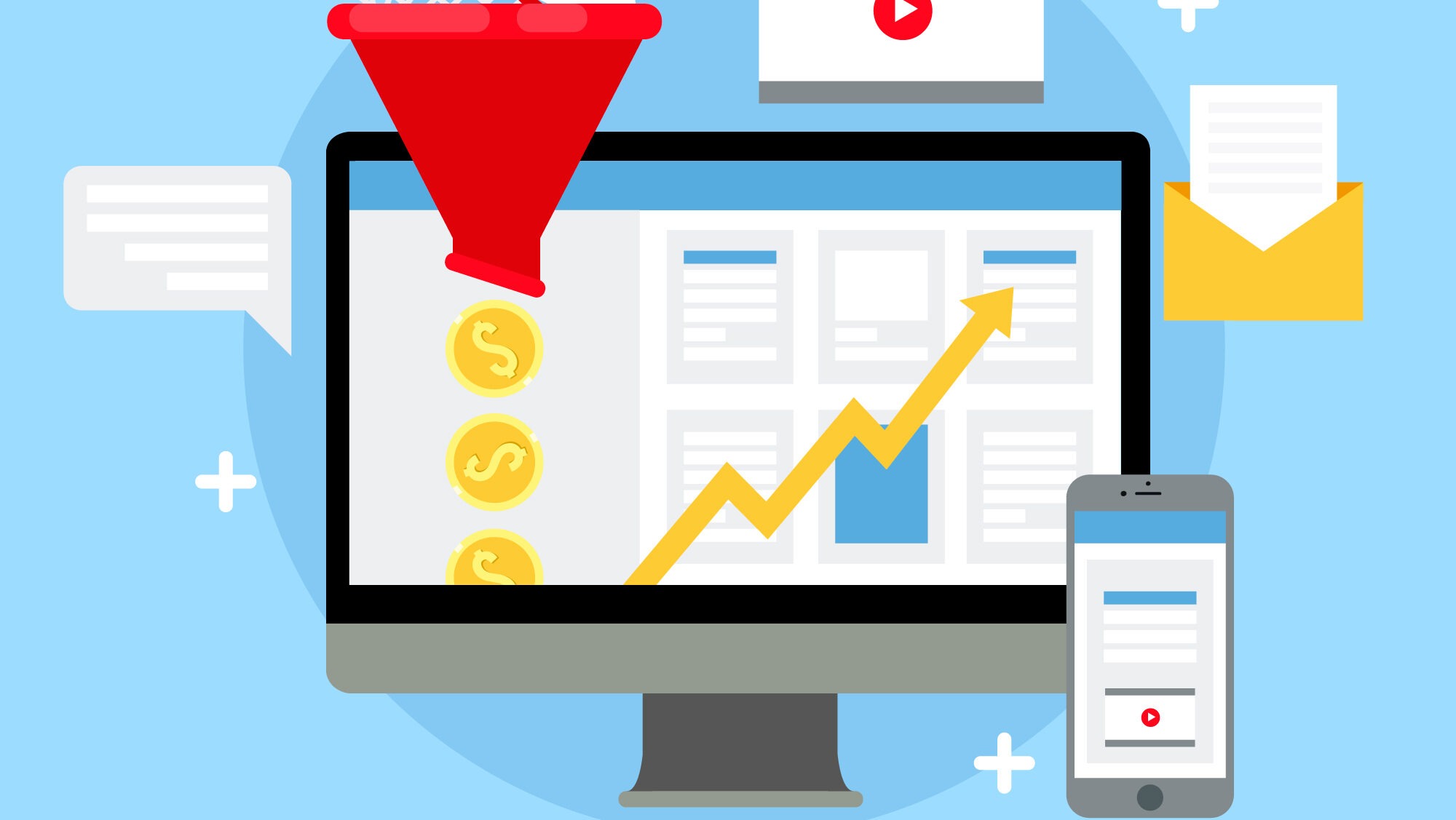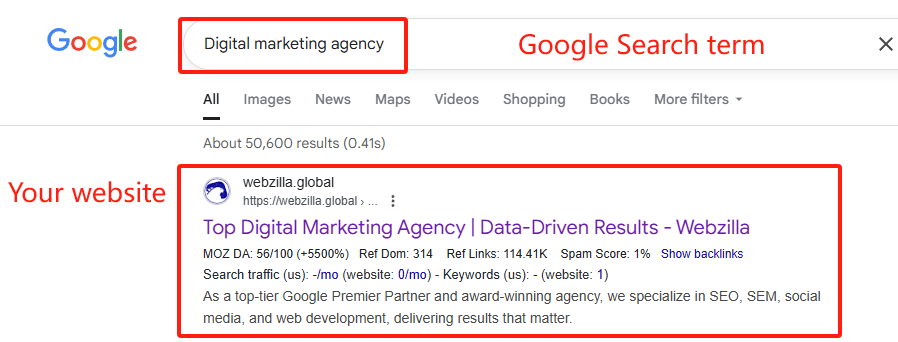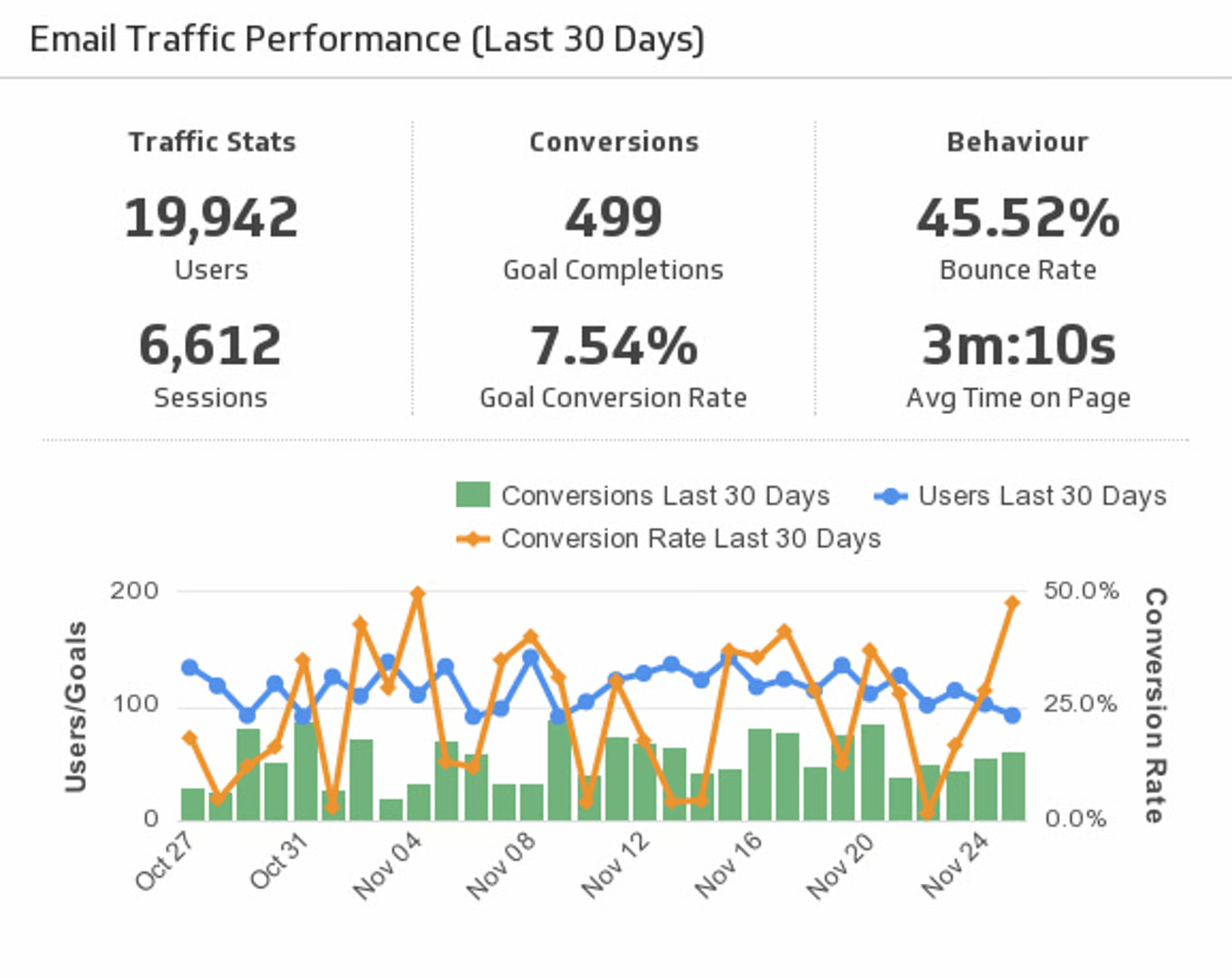
Types of Website Traffic Sources You Should Know
Types of Website Traffic Sources You Should Know
When someone lands on your website, have you ever wondered how they actually found their way there? Behind every visit lies a trail—sometimes direct, sometimes circuitous, almost always traceable. All those clicks and taps aren’t just numbers on a dashboard. They’re stories about people, their intentions, their curiosity, and, crucially, how well your digital presence speaks to their needs.
Understanding the various channels that drive those visits is the first step toward making smart decisions about marketing, content, and design. No matter what you’re building online, recognising the different streams that feed your website’s river of visitors is essential.
Direct traffic: the straight road
Direct traffic is exactly what it says on the tin: users type your URL into their browser or use a bookmark to get to you. It’s simple, apparently, but the picture can be more nuanced.
Sometimes, so-called ‘direct’ visits conceal a little more behind the curtain. Privacy tools, some email clicks, broken tracking parameters, and even certain apps can all be classified as ‘direct’, when perhaps they really aren’t.
Why does it matter?
- Indicates strong brand awareness.
- Often associated with loyal audiences.
- Can include sessions where source data is lost or hidden.

Search traffic: the world of queries
Search engines have become digital compasses. When users seek something, nine times out of ten, they head for Google, Bing, or Yahoo. Visits from search engines fall into two buckets: organic (unpaid) and paid.
Organic search is when someone finds you naturally, by typing a question or keyword into a search bar and clicking your site. Paid search is when you invest in advertising your site through the likes of Google Ads, so your link pops up at the very top.
Key differences:
| Feature | Organic Search | Paid Search |
|---|---|---|
| Cost | No direct cost | Costs per click/impression |
| Longevity | Results last | Only as long as you pay |
| Trust | Often perceived as more credible | Clearly labelled as ads |
| Speed | Results take time | Instant visibility |
If you’re familiar with the terms ‘SEO‘ and ‘SEM‘, this is where those efforts pay off.
Referral traffic: recommendations in action
When someone lands on your website by clicking a link from another site, that’s referral traffic. It’s the digital equivalent of a mate suggesting a cafe you should try. Think of online directories, blog reviews, news sites, or industry resources—any site that links out and brings you visitors falls into this category.

Referral traffic can reveal:
Referral traffic can reveal how others view your website in the wider ecosystem, which collaborations, PR, or guest posts send meaningful visits, and potential partnerships for cross-promotion. It’s worth keeping an eye on the quality of referral traffic as well. Not every link is created equal—a mention on a reputable news site will probably deliver more engaged users than a spammy blog aggregator.
Here are the main types of referral traffic sources you might encounter:
|
Type of Referral Traffic |
Description |
Typical Source Examples |
|---|---|---|
|
Guest Blog Posts |
Traffic from articles you’ve written on other websites, linking back to your site. |
Industry blogs, partner websites |
|
Press Mentions & News Coverage |
Visits from news articles or media coverage featuring your brand or website. |
Online newspapers, magazines, news portals |
|
Social Media Shares (Non-Ads) |
Clicks from links shared on social platforms, not including paid ads. |
Facebook, Twitter, LinkedIn, Reddit |
|
Online Forums & Communities |
Traffic from posts or comments in online discussion boards or community groups. |
Quora, Reddit, Stack Overflow, niche forums |
|
Business Directories & Listings |
Visits from business directories or review sites where your website is listed. |
Yelp, Yellow Pages, TripAdvisor |
|
Partner & Affiliate Websites |
Traffic from partners or affiliates promoting your products/services with tracked links. |
Affiliate blogs, partner landing pages |
|
Resource Pages & Link Roundups |
Clicks from curated lists or resource pages that recommend your website. |
“Top 10 Tools” blog posts, industry resources |
|
Educational Institutions & .edu Links |
Visits from links on university or educational institution websites. |
University resource pages, course materials |
|
Nonprofit & .org Websites |
Traffic from nonprofit or organisational websites referencing your content or services. |
NGO resource pages, association websites |
|
Event & Conference Websites |
Clicks from event listings, speaker bios, or conference partner pages. |
Eventbrite, conference websites, meetup pages |
|
Tool & App Integrations |
Visits from integrations or plugins that link back to your site. |
App marketplaces, integration directories |
|
Image & Video Sharing Platforms |
Traffic from media platforms where your content is linked or embedded. |
YouTube, Pinterest, Instagram (bio links) |
|
Document Sharing & Slide Decks |
Visits from shared documents or presentations containing your links. |
SlideShare, Google Docs, Scribd |
|
Q&A and Help Sites |
Clicks from answers or solutions referencing your website. |
Quora, Stack Exchange, support forums |
|
Blog Comments & User-Generated Content |
Traffic from comments or user content on other sites that include your link. |
Blog comment sections, community posts |
Monitoring these sources helps you understand not just where your visitors are coming from, but also the value and engagement each type of referral brings to your website.
Social traffic: the power of connection
Social media has rewired how people interact with content, brands, and one another. When visitors reach your website after clicking a Facebook post, a tweet, an Instagram story, or a LinkedIn update, those sessions are tallied as social traffic.
It’s a key way to reach previously untapped audiences and to foster community. Crafting platform-specific content, leveraging trending topics, or launching a viral campaign can all influence these numbers.
Different social networks tend to attract different types of visitors:
|
Social Network |
Audience Characteristics |
Best For |
Typical Content Types |
Engagement Style |
|---|---|---|---|---|
|
|
Broad, diverse, skewing slightly older |
Community building, brand awareness, events, casual browsing |
Posts, videos, events, groups |
Likes, shares, comments, group discussions |
|
|
Visual, lifestyle-focused, younger adults |
Lifestyle brands, influencers, visual storytelling, shopping |
Photos, stories, reels, IGTV, shopping posts |
Likes, comments, DMs, story interactions |
|
|
Professionals, B2B, industry experts |
Networking, recruiting, B2B marketing, thought leadership |
Articles, company updates, job postings, professional tips |
Connections, comments, shares, endorsements |
|
Twitter (X) |
News seekers, thought leaders, fast-paced |
Real-time updates, news, trending topics, customer service |
Tweets, threads, polls, live chats |
Retweets, replies, likes, quote tweets |
|
|
Planners, shoppers, visual inspiration |
E-commerce, DIY, recipes, fashion, home décor |
Pins, boards, infographics, guides |
Saves, repins, clicks, follows |
|
TikTok |
Gen Z, trend-driven, highly engaged |
Viral content, brand challenges, entertainment |
Short-form videos, challenges, duets |
Likes, shares, comments, follows |
|
YouTube |
Wide-ranging, all ages, global |
Long-form content, tutorials, reviews, vlogs |
Videos, livestreams, shorts |
Subscribes, likes, comments, shares |
|
|
Niche communities, topic-focused |
Deep discussions, AMAs, feedback, niche interests |
Posts, threads, AMAs, polls |
Upvotes, comments, awards, shares |
|
Snapchat |
Younger audience, ephemeral content |
Real-time sharing, behind-the-scenes, promotions |
Snaps, stories, filters, lenses |
Views, replies, screenshot, shares |
This table provides a comprehensive overview of major social networks, highlighting their unique audiences, best uses, content types, and engagement styles to help you tailor your strategy for each platform.
Paid social campaigns deserve a mention too. These amplify your reach by putting your posts in front of users outside your immediate followers. Whether organic or sponsored, all social clicks are measured within this bucket.
Email traffic: the inbox invitation
Email remains one of the most direct ways to reach someone, right in a place they regularly check. If you send out newsletters, promotions, or updates, every click-through to your site is counted as email traffic.
Properly tagged email links in your campaigns help analytics tools spot and categorise these visits. Overlook the tagging, and many of those visits might slip into ‘direct’ by mistake.
Why prioritise email?
- Nurtures returning customers, not just first-timers.
- Highly trackable, with the right setup.
- Provides a feedback loop for your most invested audience members.

Display advertising traffic: banners and more
Think of banner ads, pop-ups, or sponsored promotions that appear across websites you visit. All traffic funneled to you from these visual digital ads falls into display advertising traffic.
This category is vital for those aiming to boost brand awareness and retarget site visitors. It’s measurable, scalable, and can reach audiences almost anywhere.
Display ads can manifest as:
- Static or animated banners on websites
- Video pre-rolls on platforms like YouTube
- Sponsored listings on news sites
Tracking display traffic often relies on tagging through ad platforms or analytics software, helping you understand which creative assets and placements are worth the investment.

Other/discoverable traffic categories
The traffic sources outlined above cover the main highways, but there are lesser-known byways in the digital world too.
Affiliate traffic: Partners or influencers who promote your products earn commission for referrals. These links are often uniquely tagged for individual affiliates.
Messenger and chat: Clicks from direct messaging services, such as WhatsApp, Messenger, Slack, or SMS, can contribute to traffic, though these are harder to track precisely unless tagged.
Push notifications: If users have subscribed to push notifications from your website, each alert they click counts as another traffic source.
Offline sources: Yes, even offline events can spark online visits. Someone scanning a QR code from a billboard, event flyer, or in-store display ends up boosting your traffic, sometimes tracked with special campaign parameters.
Traffic quality: not all visitors are equal
It’s tempting to focus purely on the volume of visits, but what really counts is their quality. Each source has distinct patterns in terms of engagement, bounce rates, and conversion.
Here’s a comparison to illustrate:
| Traffic Source | Typical Engagement | Potential for Conversion | Common Pitfalls |
|---|---|---|---|
| Direct | High | High | Tracking lost sources |
| Organic Search | Medium-High | High | Lag time for SEO results |
| Paid Search | Medium | High | Can be costly |
| Referral | Varied | Medium | Low quality/spam links |
| Social | Low-Medium | Low-Medium | Shallow engagement |
| High | High | Needs robust list hygiene | |
| Display | Low | Low-Medium | Banner blindness |
| Affiliate | Varied | Medium-High | Variable partner quality |
The best traffic strategies recognise that variety isn’t just the spice of life—it’s the only way to cover your bases and tune your performance over time.
How to track, measure and refine
It’s not enough to simply know about different traffic sources. Setting up reliable measurement practices is critical for understanding what’s working.
Consider these must-dos:
- Use Google Analytics (GA4), Matomo, or another modern analytics tool.
- Tag links using UTM parameters, especially for email, partnerships, and offline campaigns.
- Segment your analysis by device, campaign, geography, and referral site.
- Regularly audit the sources driving growth against your goals.
Armed with solid data, decisions about content, spend, and outreach become a lot less guesswork and a lot more strategic.
The interplay between sources
Rarely does someone glide onto a site along a perfectly straight path. People might see you on social media, forget, then spot you again in Google, and finally tap back via a bookmark days later.
Attribution modelling helps untangle these cross-channel journeys. By reviewing different attribution models (first click, last click, linear, time decay), you can better understand the role each source plays over the customer lifecycle.
Building a resilient traffic mix
Relying too much on any single channel is risky. Changes in search algorithms, social platform policies, or advertising rules can all shift the ground beneath your feet.
Here’s what helps:
- Diversify your investment across organic and paid activities.
- Keep building your email list.
- Nurture your referral partnerships.
- Test new platforms or tactics as digital trends shift.
Choosing the right traffic sources to focus on isn’t a static process, either. It requires continuous attention, adjustment, and curiosity.
Practical steps for moving forward
As you assess your traffic sources, consider:
- What do your current analytics reveal about visitor origin and behaviour?
- Is there a particular channel that consistently performs better—or lags behind?
- Are you missing out on tracking opportunities, particularly with email, referrals, or offline initiatives?
- How are you segmenting audiences for retargeting or personalisation?
Set aside time each month for a quick audit of your inbound traffic, adjusting budgets and efforts to suit what your reports show.
Every click, scroll and conversion tells part of your website’s larger story. The more thoughtfully you analyse where people are coming from, the better you can shape your digital presence for future growth. And whether you’re drawing in visitors from the other side of the globe or just across town, knowing your traffic sources turns your website from a guessing game into an intelligent, living asset.

